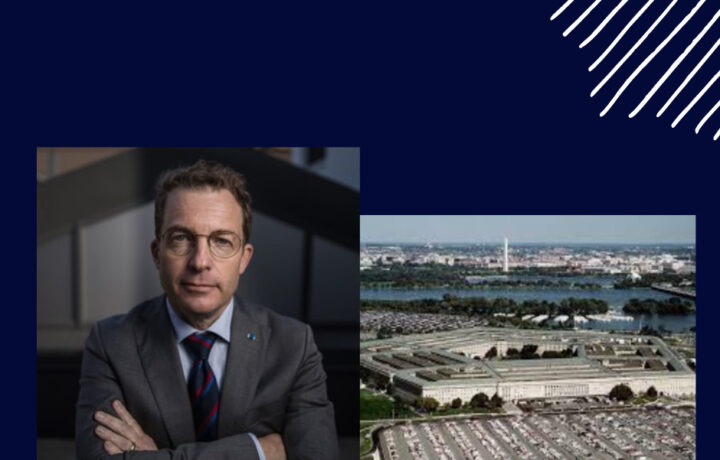Collaboration across a variety of stakeholders has always been a part of David Cattler’s career. And he’s bringing that mindset to his new role as Director of the Defense Counterintelligence and Security Agency (DCSA). On board just shy of 30 days and back in the U.S. from a stint as the Assistant Secretary General for Intelligence and Security at NATO for just a few months, Cattler is engaging with stakeholders and casting a vision for the future of security.
Cattler has served in multiple intelligence entities across government, including roles with the Director of National Intelligence, Defense Intelligence Agency, and National Security Council. For those reasons he professes himself as a ‘recovering’ analyst now serving as a security officer. He brings that deep analytical framework and policy management prowess to DCSA, which faces significant challenges in both the personnel security and counterintelligence front.
“We simply can’t do things in the future the way we’ve always done in the past,” said Cattler, who also emphasized he has no plans to be the kind of director who jumps in on day one and turns over the tables to bring change for change’s sake. But for areas where the agency is already stepping back to take a look at how to improve processes, such as the current National Background Investigation Services (NBIS) recovery effort and analyzing the current roles of DCSA and where it needs to be strengthened, Cattler noted the analysis is already underway, with consideration for where change may be needed.
It’s not just the new director who is looking at DCSA with their analytical glasses on. A recent report released by the Defense Innovation Board made several suggestions related to potential barriers to innovation in the security domain. The report suggested the agency might not have the authorities it needs for the significance of its mission. Cattler said any time you’re considering adding new authorities you first need to evaluate “for what purpose.” That evaluation of capabilities and responsibilities is a part of what he has been doing in his first month, to see where things need to leveraged in a more efficient or effective way.
When it comes to NBIS, Cattler noted the hiring of a new NBIS program manager and a new program executive officer are steps toward getting the program on track. They’re ensuring they have the right people with the right experience in the right places, along with procurement, timeline, and responsibilities oversight.
NBIS and personnel security may be a big part of DCSA’s mission, but they’re not the only ones. Protecting industrial security and supporting counterintelligence and insider threat programs are other key areas, and ones with new ways for industry to engage. DCSA recently announced a strategic partnership with the DoD Cyber Crime Center (DC3) to establish a Vulnerability Disclosure Program (VDP) supporting the Defense Industrial Base (DIB) – known as the DIB-VDP. The program offers cost-free resources to companies across the DIB, through the voluntary program.
With more than 10,000 companies and 12,500 facilities across DCSA’s profile, increasing information sharing and hopefully identifying and mitigating risks is one way to strengthen across the DIB.
Trusted Workforce 2.0 and DCSA 2040
Cattler noted support of the government’s Trusted Workforce 2.0 transformation, highlighting the significant work that had already been done in changing the way the government thinks of both cases and risk.
“Innovation has already been done in Trusted Workforce,” said Cattler, who noted DCSA’s ongoing engagement with the Performance Accountability Council Program Management Office (PAC PMO) to continue that effort.
Transforming personnel vetting may already be underway, but there is also a need to build on the current momentum to move toward a future-focused security posture. For DCSA’s first five years, addressing the backlog and creating a new baseline for security clearance processing times held focus. In recent remarks, Cattler is challenging the agency to consider DCSA 2040. The challenges the nation faced in 2008 weren’t the challenges we face today, Cattler said. To move DCSA forward, it will also need to think for the future – the threat landscape not just of today, but for the next decade and beyond.




